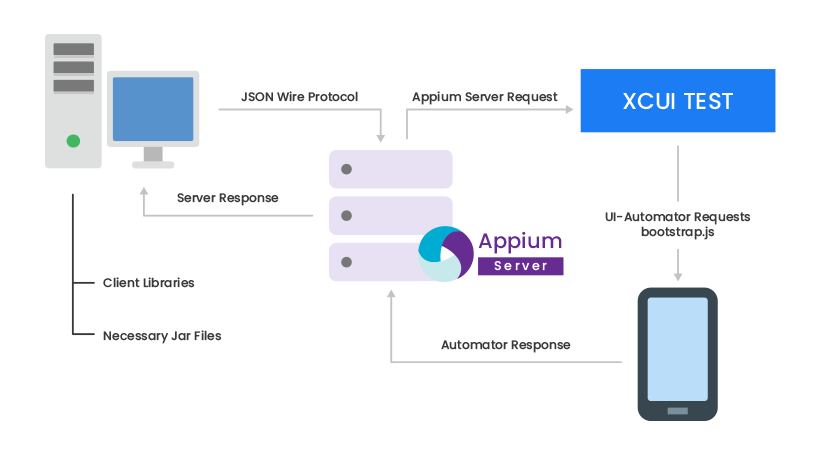

- #Download appium java client how to
- #Download appium java client apk
- #Download appium java client manual
- #Download appium java client for android
#Download appium java client for android
It is the officially preferred language for Android app development, and a friend of mine is even rewriting his team's backend API in Kotlin. The compiled code runs on the JVM, it is supported by Java IDEs, and its syntax is very similar to Java. jar files from The Central Repository. Android Studio is also able to fetch the dependencies with the built-in sync function as long as you have the repository included in the Project’s gradle.Kotlin is a new programming language, which is many ways is the successor to Java.


First, you can download the Appium specific Java. You naturally need the latest Android Studio installed and all required Appium components.
#Download appium java client how to
Now, let’s drill in details how to set up your Gradle build files. I’ll be showing how to execute a basic client-side Appium test with Gradle, but remember that you can also include additional functionality to your tests by accessing the Bitbar REST API. The following picture illustrates the difference between these two: As this is fundamentally very different from the instrumentation concept, let’s highlight once again the difference between client-side and server-side Appium.
#Download appium java client apk
The client-side Appium test script isn’t packaged as an APK but instead, it is executed as a test script – from your local machine. The Basics of Appium and Selenium with Android Studio and Gradleįirst, the nature of Appium (or Selenium if you will) client-side execution is very different from the regular Android instrumentation: with Android instrumentation you have two different APKs – one as your own application and one for the test itself (the instrumentation APK).
#Download appium java client manual
However, this time we’ll look at how to configure your Gradle build files, how to prepare Appium test for device runs, and how to access those devices without manual effort. To learn how to push any APK from Android Studio to cloud and generally how to use Gradle plugin to get your builds tested on real devices – without a need to configure and maintain physical devices. Before you go deep, download our free Appium beginner’s tutorial to building proper Appium infrastructure for Gradle tests.Ī couple of years ago, we released a comprehensive Gradle plugin for bridging the gap between real devices on cloud and Android Studio development environment – and quite many of Android Studio users use this plugin nowadays. But there is very little information on how Android Studio and Gradle is used with Appium, what are the best practices and how to access real devices from your development tool.

We’ve talked about setting up the environment and running some basic tests with Python, Java, C#, Ruby, Mocha, and even testing React Native app with Appium. One of the greatest things about Appium is that it works pretty much with any programming language and developers surely have plenty of options to pick from. Now, let’s look on how to get your Appium tests up and running - when built with Gradle. As you know, Appium client-side execution is slightly different compared to how other test automation frameworks are used and you typically just upload your APK (or IPA for iOS) first, then start your test from localhost and once the test is finalized you’ll (or your scripts) pull back the results for local inspection. This is the 20th blog in our Things You Should Know About Appium blog series and this time we’ll take a look on how to bridge the gap between Android Studio, Gradle and Appium tests running on a real device in the cloud.


 0 kommentar(er)
0 kommentar(er)
